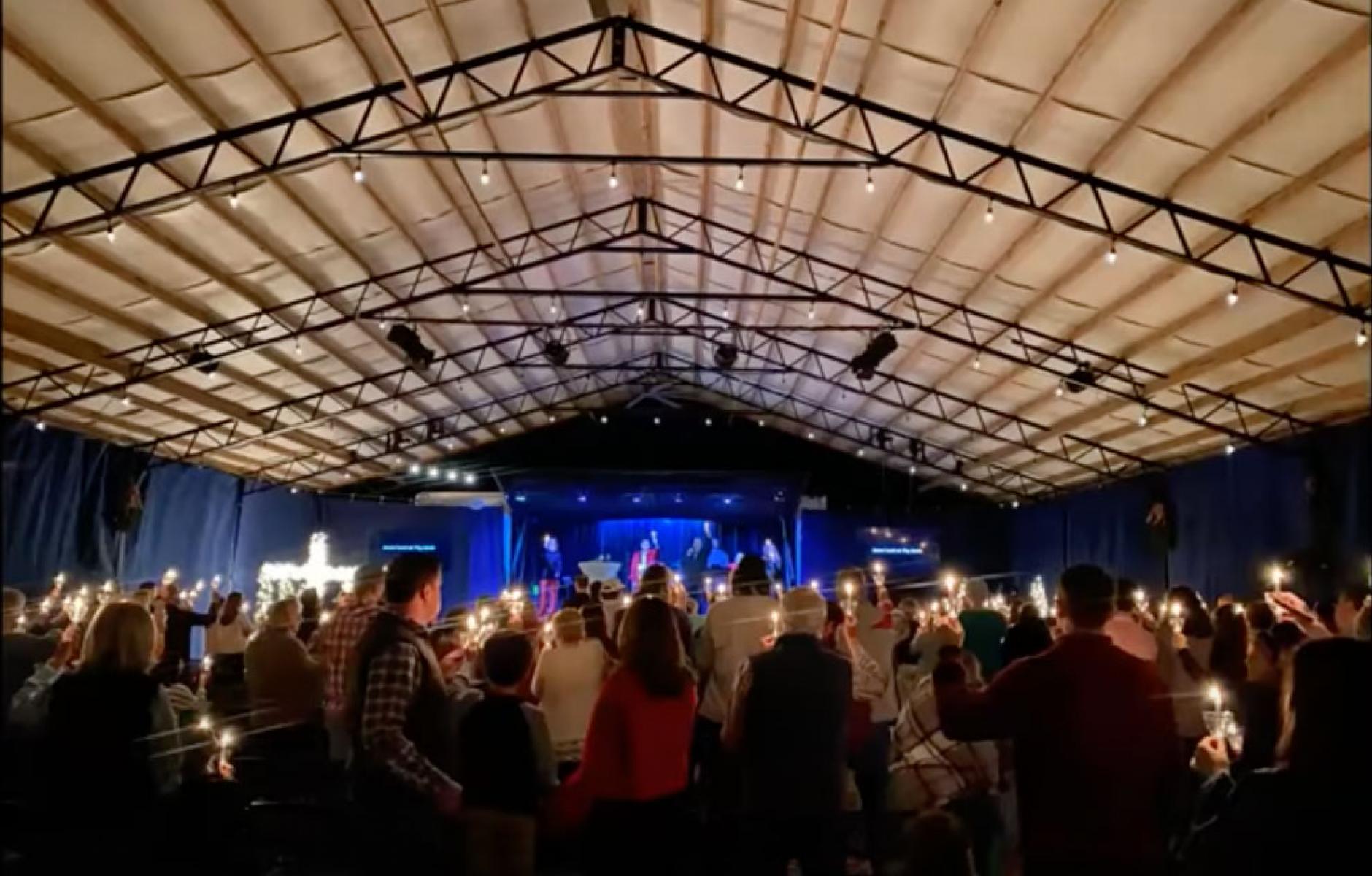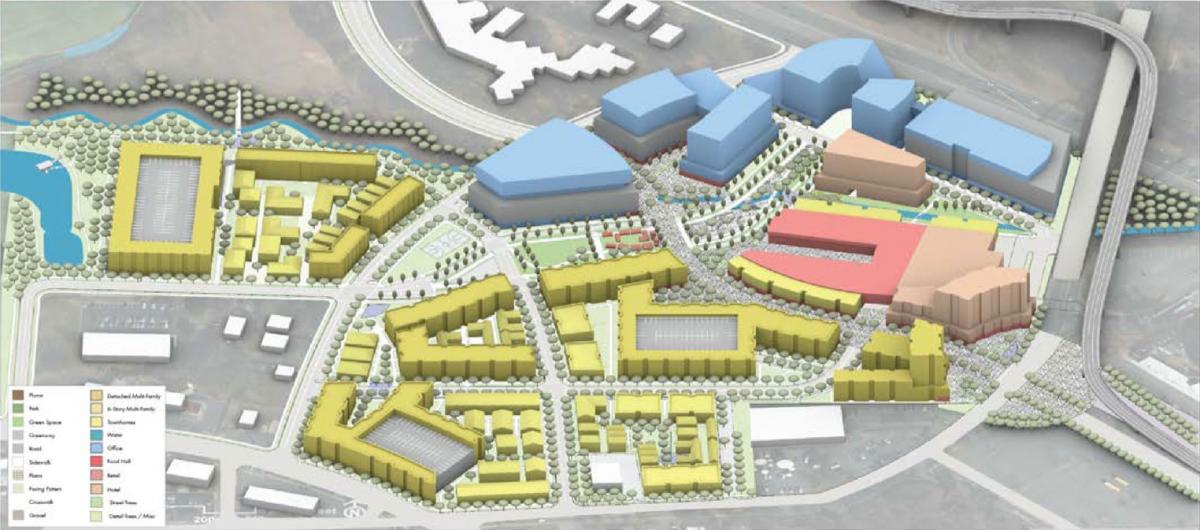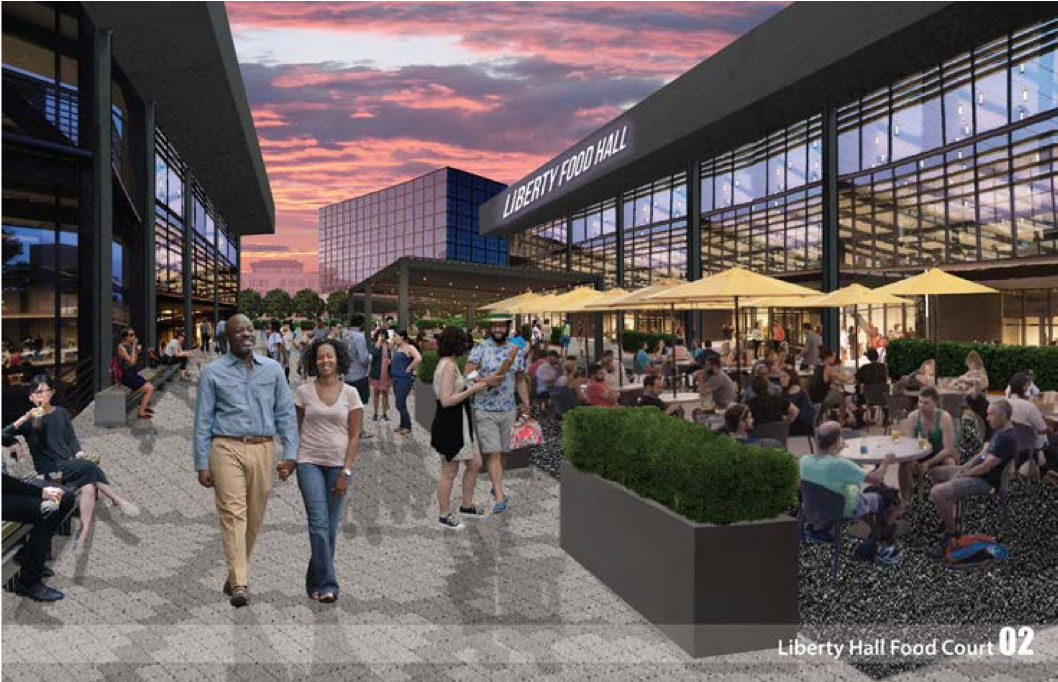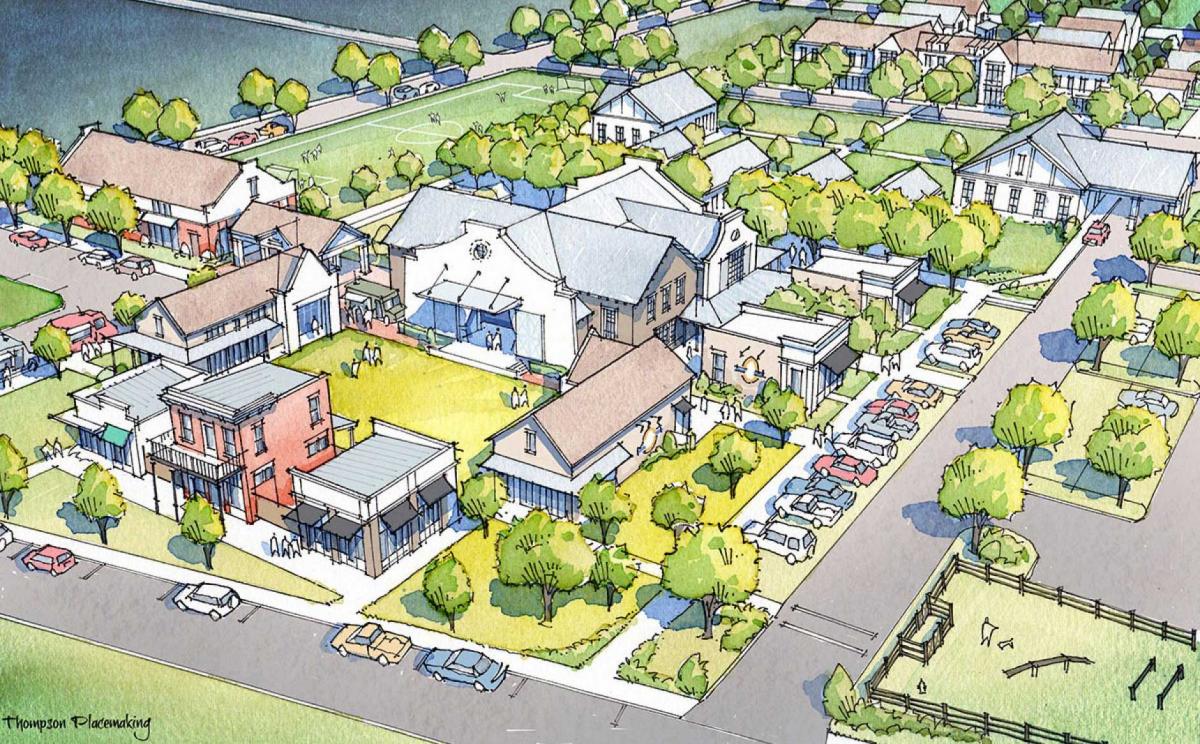
The church of urban transformation
A growing number of sites owned by worship organizations across the US are in need of planning and development that strengthens community. Those sites present opportunities for mixed-use projects that fulfill higher goals for the faith institutions, according to experts on an On the Park Bench webinar last week.
Representatives of churches in Charlotte, North Carolina, and Pike Road, Alabama, presented compelling plans that are moving forward on the neighborhood scale. In each case, the goals of the faith communities align with the principles of the Charter of the New Urbanism.
The Park Church, one of the largest churches in the Charlotte region, owns an underutilized site of 33 acres near a proposed light rail stop, within three miles of the city center (a couple miles from the church's main sanctuary). The site is expected to be rezoned for transit-oriented development (TOD). Buildings on the TOD site and nearby—including an arena—have large parking lots in a suburban-style layout, surrounded by economically diverse neighborhoods.
The property currently has buildings used for conventions and events, including the Southern Christmas Show that attracts 100,000 visitors. The events have generated good memories for multiple generations of people since the church bought the site in 2006, says Bishop Claude Alexander, the church pastor. “In taking away something of intergenerational memory and value, we have to create something at least as powerful in terms of memory and experience,” he says.

Architecture professor Deb Ryan of University of North Carolina Charlotte held a design charrette with students to create a plan that has facilitated discussions with private developers. The BOPlex Park Vision Plan envisions a transformation to a walkable urban built environment. The first step is to build a Main Street across the property, extending through the site and connecting to outside streets, says Ryan. Next, the planners established a network of pedestrian-scale streets and public spaces.
Overall, the plan is the physical manifestation of ideas that align with the church. After reading a book by Bishop Alexander, students decided that that plan needed to be about a larger idea: Shalom, or flourishing and thriving. The plan has a triple bottom line of “profit, planet, and people.” Relative to profit, the “church was adamant that they want to make as much money as possible to fund missionary work throughout the world,” says Ryan. Toward that goal, the site has substantial density: Nearly 1,500 dwelling units, including missing middle and higher density housing; a 48,000 square foot food hall (in a reused building); nearly a million square feet of office space; 38,500 square feet of retail; a small convention facility; parks and a greenway; and more.

Site for a growing congregation
In Pike Road, Alabama, the Century Church is developing a 23-acre greenfield site in a rapidly growing suburb, close to an existing new urban community called The Waters. “We wanted to create something that is special and unique, that is life giving for a community that is growing,” says pastor Patrick Quinn.
The Century Church brought in a team of new urbanists from around the world, including Nathan Norris, a CNU fellow who lives in Pike Road and presented on the panel with Quinn—for a five-day charrette with the community. The team came up with a plan that calls for incremental development of the site.

Four principles came out the charrette, which have become a driving force for the Century Church, Quinn says.
- Community first, church second. The plan calls for buildings that the larger community wants and needs, and the church would use those buildings as the schedule demands.
- Growing incrementally (forever). Growth in phases over a long time allows the church to change and adapt to community’s needs over time.
- Partner. Build the plan out in partnership with other organizations. Partners may include the YMCA, other nonprofits, for-profit businesses like cafes, art galleries, etc.
- Do it with adventure and creativity. The plan and conditions will change all the time, and so the church must approach everything with a sense of adventure. “When the church is at its best, we are exploding with creativity,” says Quinn.
The primary public space is called “The Well,” after the Bible story of the woman at the well. “Everyone is welcome—we want people to come from all walks of life,” explains Quinn. That idea is similar to a welcoming plaza at the entrance of the Charlotte plan. The Century Church was ready to go vertical as covid hit, and that forced some changes in strategy. They built a temporary version of The Well with shipping containers and pole barns. “The town allowed us to incrementally built on our property with a temporary permit,” he says. They broke ground on permanent structures early this month.
The Charlotte and Pike Road plans are different in many respects: One is in a big city, another in a suburb that is still largely rural. One is infill, another is greenfield. One has higher density. Nevertheless, the plans for The Park Church and the Century Church have much in common in terms of underlying philosophy—and both benefit from mixed-use walkable urban design. Below is the video of the webinar, Urbanism and Faith Communities, moderated by Chris Elisara, co-director of the World Evangelical Alliance Sustainability Center, and a former member of CNU's board of directors.
Here are resources and links for further reading, courtesy of Chris Elisara:
- Public Square article, A call to rethink dying houses of worship, June, 2022.
- Georgia Tech Report on Faith-Based Affordable Housing
- CNU Members Christian Caucus
- Faith Property Collaborative
- Terner Center For Innovative Housing: Mapping the Potential and Identifying the Barriers to Faith-Based Housing Development
- Cathedral District Master Plan, by Torti Gallas.





